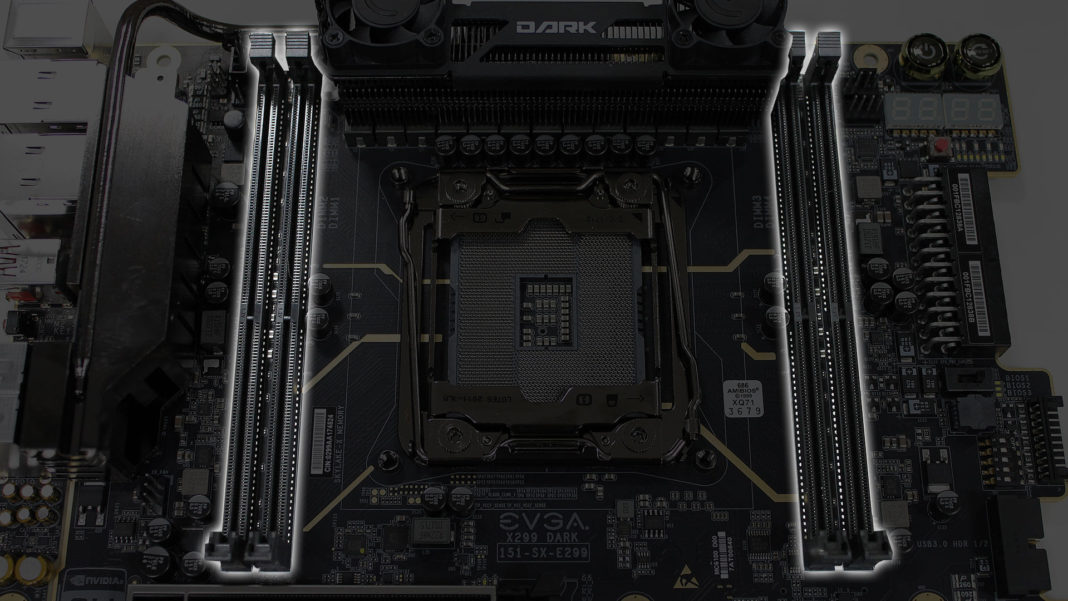It’s been a busy month over the new year as companies try and launch products for CES. Despite CES being a minor show these days for tech there was still quite a few important products launched. Let’s start with something launched before CES though. Watercool launched their updated Heatkiller IV block for AMD ThreadRipper:

This maintains the beautiful looks of the Heatkiller IV but it seems to have grown the cooling engine considerably. This might be a great performer as the original Intel Heatkiller IV that we tested set new standards for performance when it launched.
Alongside this CPU water block, Watercool also showed off two motherboard VRM blocks:

The waterblocks are designed for the ASUS RAMPAGE VI APEX and ZENITH EXTREME. They may possibly fit other Asus motherboards if they share the VRM design.
EVGA’s Dark series of motherboards were one of our favorites for their excellent build quality, great overclocking performance and dark aesthetics. We used the X99 Dark in our build “project thief”. The new board is even more focused than previous designs and as always is designed in conjunction with overclocker K1ngpin.
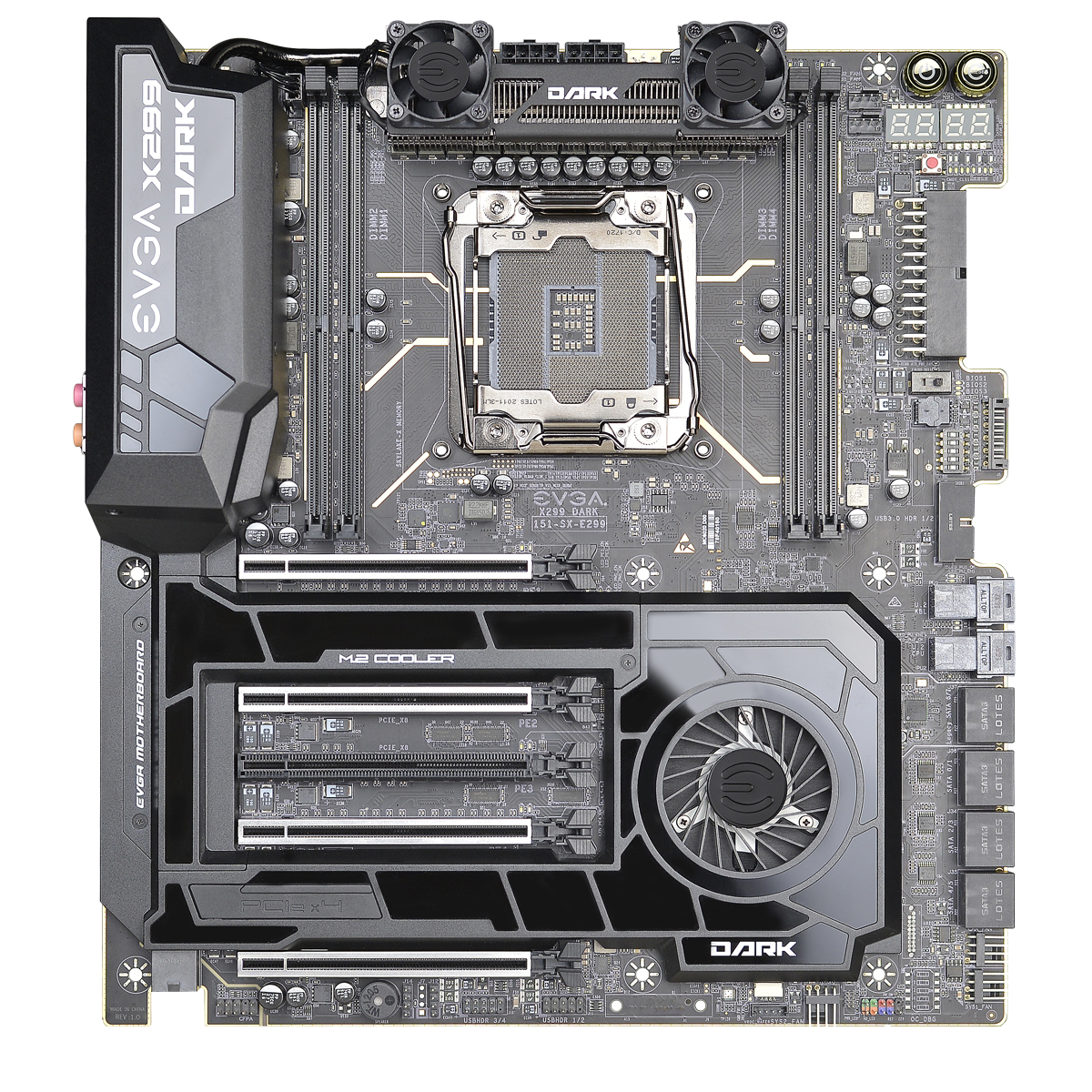
While everyone else is upping their RGB game on motherboards, EVGA chose to leave this series still dark and true to its roots. With extreme overclocking and up to 18 cores the i9 CPU’s can use huge amount of power and so VRM cooling becomes a major issue. EVGA resolved this by simply adding multiple fans to the VRM heatsink which also uses a heatpipe to spread the load to the IO port area. There is a reasonable amount of room around the CPU also for larger cooling pots and the PCB is kept reasonably clean for easy insulation. 4 way graphics cards are still supported to allow for maximum benching scores.

12 layer PCB was used, instead of traditional 8 or 10 layer, to allow more room for traces and consequently better bandwidth.
In addition a blower fan was added to the south bridge area to act as M.2 cooler, allowing the heat produced by M.2s to go out the I/O shield.
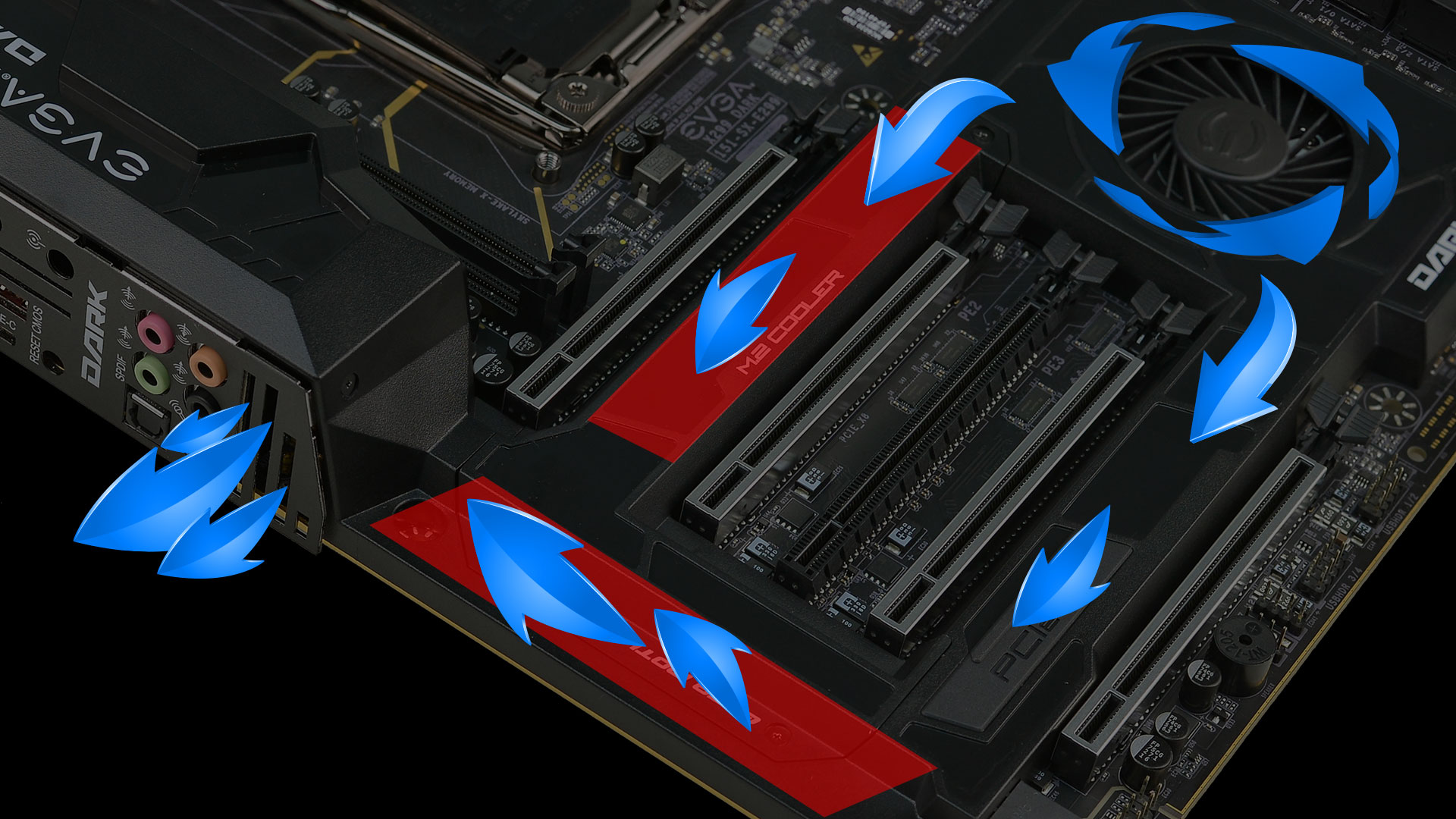
You may notice that there are not the usual full 8 DIMM slots, but rather 4. This decision is sometimes made on extreme overclocking boards in order to reduce capacitance on the memory bus traces and in this case EVGA found that it increased the overclocking potential of the memory bus by a few hundred more MHz.
Here we have a full explanation of boards details:
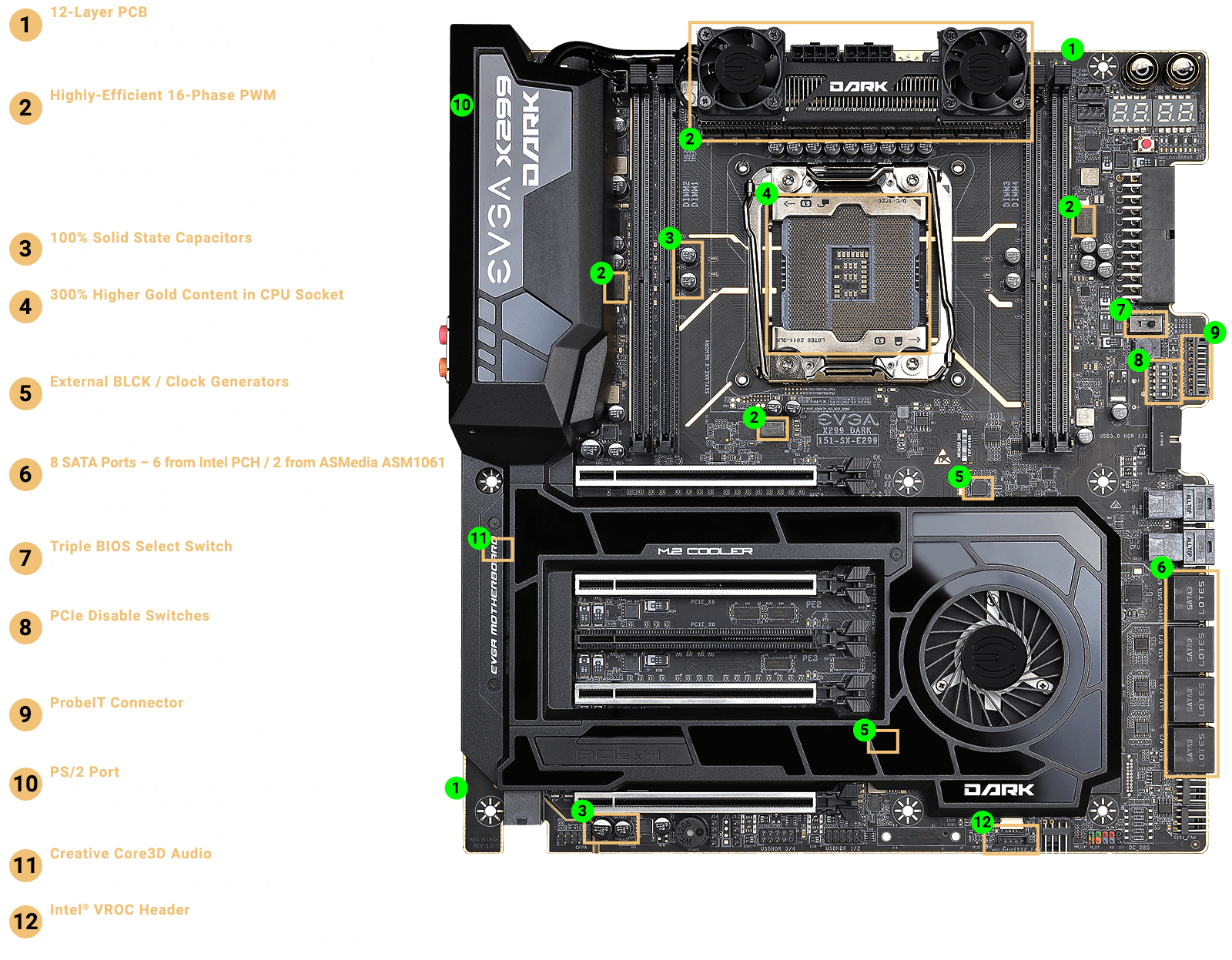
Connectors are rotated 90 degrees and cutouts are added so that the board has a cleaner look once cabled up while keeping better compatibility with some cases on the market. Note that with any EATX board and particularly one with rotated ports you should check your case for compatibility. The rotated 6 pin PSU also avoids clearance issues with that 4th GPU. The other ports at the bottom are not so lucky, but generally these are not ports used during bench work.
Here is a full list of specifications:
- Chipset: Intel X299
- Socket: Intel Socket 2066
- Form Factor: E-ATX
- SLI: 4-Way
- Memory: 4 DIMM Quad-Channel (up to 64GB) DDR4 4000MHz+ (SKX), 2 DIMM Dual-Channel (up to 32GB) DDR4 4133MHz+ (KBL)
- USB: 8 Native USB 3.0 / 4 USB 2.0
- USB 3.1 (Rear I/O): 1x Type-A, 1x Type-C
- SATA: 6 Native SATA 6.0Gbps Ports / 2 ASMedia SATA 6.0Gbps Ports
- Ethernet: 2x Intel® Gigabit NIC
- Audio: Creative Sound Core3D Quad-Core Audio Processor
- Fan Headers: 7 (2 PWM, 5 DC\PWM)
- PCB: 12 Layer
Pricing and Availability:
The board is available for purchase at EVGA’s online store for $499 USD, which is steep compared to budget mainstream motherboards but quite affordable compared to Asus’s Rampage VI Extreme which is currently $650.
ASRock announced their collection of new products for showcasing at CES 2018
They have announced three products:
- X399M Taichi – The first mATX motherboard based on AMD’s TR4 ThreadRipper platform:

- X299M Extreme 4- Another mATX motherboard this time for Intel’s X299 platform
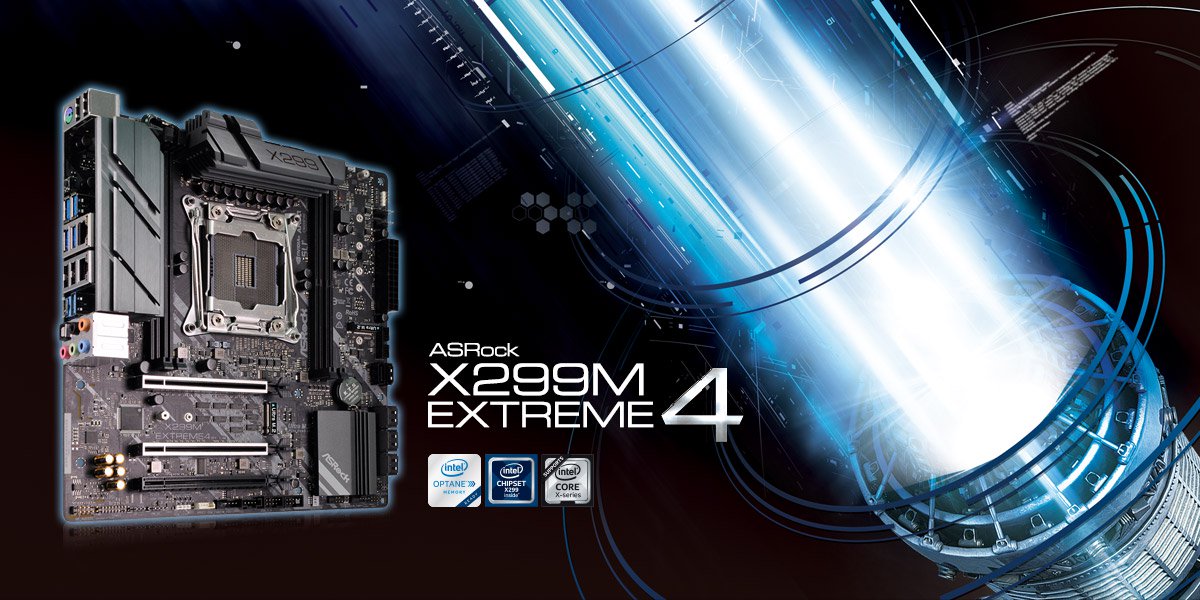
- Z370 DeskMini GTX- ASRock’s custom form factor NUC style mini PC with STX sized motherboard and MXM GPU. The system uses coffee lake CPUs and a GTX 1080.
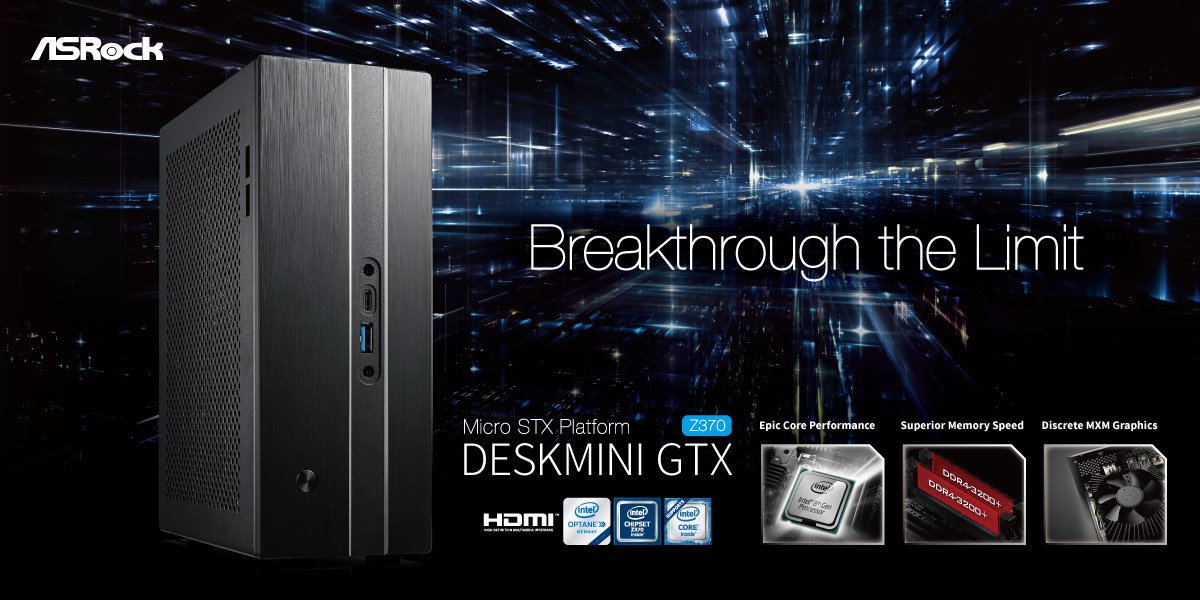
This is all the information we have regarding the aforementioned products. We can expect more information as CES happens.
AMD
One of the most exciting news we saw at CES was AMD’s announcement of second generation Ryzen CPU’s.

Ryzen 2 (called series 2000) is scheduled to launch sometime in the beginning of Q2, probably in April. In this roadmap we also see the approximate release date of ThreadRipper, which is on track for second half of 2018.
All of these Ryzen derivative products are going to be made on 12nm process node rather the current 14nm. There are no major architectural improvements so performance improvements will be mainly limited to higher clock speeds and improvements to the memory bus efficiency and latency.
Other interesting news from CES this year is Intel’s announcment of Hades Canyon NUC with an 8th Gen CPU and an AMD Radeon VEGA GPU. We had been hearing about this Intel/AMD collaboration for a while as Intel’s own graphics are still lacking and NVidia is becoming a real threat to Intel. This is something quite unusual for the industry and the first time we have see Intel and AMD collaborate on making a product with two dies like this.
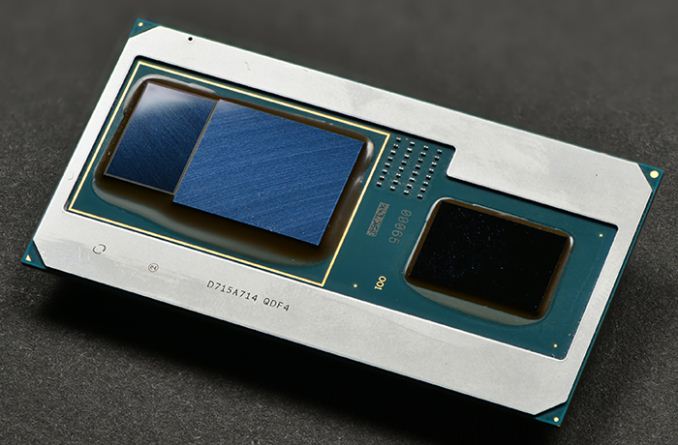
This product will be divided into three different categories:
U: Mainstream Mobility
- Thin & Light Products
- Long battery life
- Integrated Intel UHD Graphics
G: Thin & Light Performance w/ Discrete Graphics
- Intel’s high performance mobile enthusiast CPU
- First Consumer EMIB, HBM2, discrete graphics on package, power sharing
- Enthusiast Gaming and VR Experience
- Innovative designs
H: Highest Performance
- Intel’s high performance mobile enthusiast CPU
- CPU-attached discrete graphics for Consumer
- 4K Gaming
- Professional Media Creation
- Mega-Tasking
Those are all the marketing terms intel uses to separate different SKUs. They will range in 65-100W TDP.
Sources: EVGA, ASRock, Videocardz, Forbes







